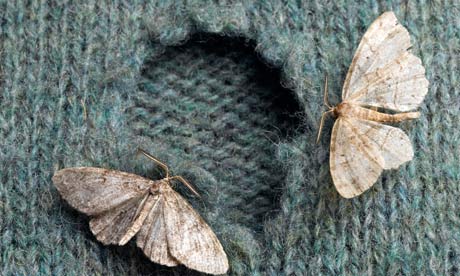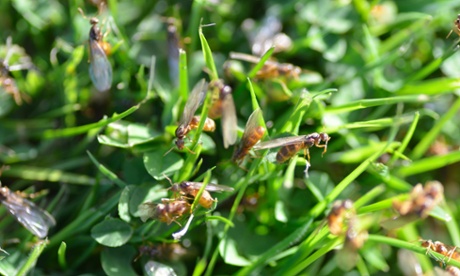They are tiny, voracious and fond of high-quality woollens, and after the UK's spring heatwave they are infesting drawers and clothes cupboards everywhere. Tineola bisselliella, or the common clothes moth, is on the march, bringing a bad name to all the country's 2,500 other, entirely innocent moth species, and doubling the sale of mothballs.
The fumigation of the London HQ of the Department for the Environment, Food and Rural Affairs has brought things to a head. Amid a welter of quips about mothballed projects, thousands of Tineola larvae in the building have been whacked with dry ice and moth-toxic spray. Unlikely to practise such doomsday retribution, what can the ordinary clothesowner do? Are we doomed to social gatherings flavoured with the tang of naphthalene or old lady's lavender, and snide comments about holes?
No. Clothes moths flourish only when people prepare ideal homes for them: once or twice-worn woollens returned unwashed to a cosy, dark drawer or left in the laundry basket long term. Tineola larvae love sweat residue and all the tiny stains of modern life. They also like soft, expensive fabrics such as cashmere. So vacuum rooms, wash vulnerable clothes after wearing and tuck them away with cedarwood mothballs or sprigs of rosemary. Start a regime of regular folding and unfolding. Keep bedrooms cool as our sturdy Victorian ancestors did and flaunt your best woollens rather than tucking them away in the dark. Cashmere on a row of Shaker hooks looks good and Tineola hates the light.
Don't let your wrath spread to other moths or insects, which in the last resort could be your best friend. Installing the tiny parasitic ichneumon wasp will see Tineola eggs and larvae wiped out within a month. Harmless to humans, the wasps then buzz off elsewhere.











